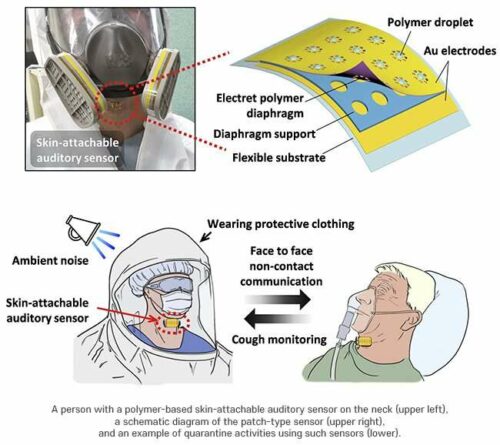Researchers at POSTECH have developed a skin-attachable auditory sensor that detects voices even in harsh noisy environments

Conventional microphones that are used in telephones and walkie-talkies fail to recognize human voices clearly in very windy or loud environments, especially when the speaker is wearing a mask. Hence, to be audible people would add strain to their throat muscles while speaking loudly. This communication problem may create hurdles in executing emergency services like a hospital setting, fire emergency, or other urgent situations. To overcome this problem, a research team led by Professor Kilwon Cho, Dr. Siyoung Lee, and Hajung Roh (Department of Chemical Engineering) at POSTECH has implemented polymer electrets to microelectromechanical systems (MEMS) to fabricate an auditory sensor.
The electret-powered and hole-patterned polymer diaphragm is integrated with a skin-attachable auditory sensor, which reduces the necessity for a battery to work. The sophisticated diaphragm structure based on MEMS technology gives the auditory sensor high wearability and portability. The diaphragm allows the sensor to detect the neck-skin vibration generated when a person speaks. Those using this sensor can hear sounds even in a concert hall or other noisy places, or when their faces are completely covered with a gas mask.
This new technology can be used for disaster-response communication between medical professionals wearing protective equipment against respiratory diseases, including COVID-19, and firefighters wearing gas masks and other forms of turnout gear. It can be used as a diagnostic device that detects respiratory diseases by measuring the number or severity of coughs in real-time or as a healthcare monitoring device that analyzes voice usage patterns to figure out whether the vocal cords are healthy.
Click here for the Published Research Paper







